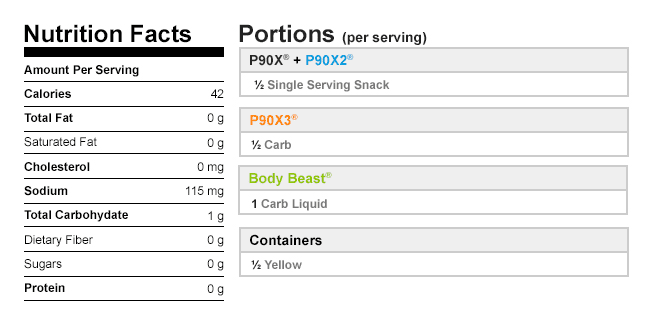Everything You Need to Know About Rosé Wine

Move over, white wine. Rosé wine has taken its place as my new go-to (in moderation, of course) on hot summer days. And speaking of hot, rosé has taken the food world by storm.
Check out Instagram, food blogs, and pretty much any lifestyle website and everything’s coming up rosés: rosé slushies, rosé ice cubes, rosé gummy bears, rosé popsicles — you get the picture. You can make an endless number of treats with this gorgeous wine. But first, a lesson in rosé… then stay tuned for four unique recipes that use the pink potion.
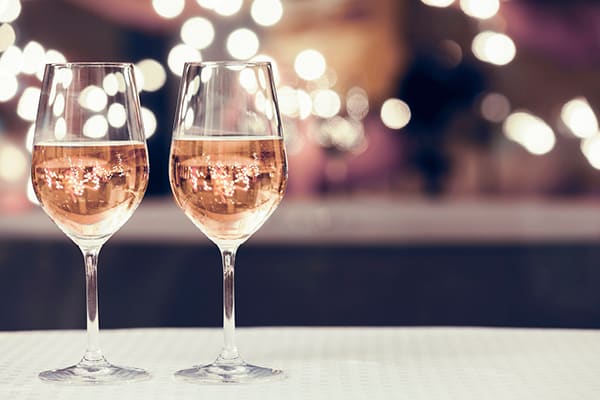
What Is Rosé Wine?
Rosé wines are made from the same grapes as reds, but rosés can range in color from super-pigmented magenta to golden copper. The color depends on two things: the type of grapes that were used and how long the skins were soaked in the juice.
Some grapes have a thicker skin, and this is what imparts a richer color. For rosé wines, the skins are left in the juice for about 12–24 hours. For red wines, the skins can sit with the juice for up to three weeks, whereas for white wines, the skin spends no time in contact with the juice.
Provence is France’s oldest winemaking region, and was also the first region in the world to make rosé. According to Vins de Provence, in the early days of winemaking, all “red” wines were pale, closer in color to rosé wines. This is because the winemaking technique of macerating — leaving the grape juice in contact with the skins before pressing — had not yet been developed.
With only a few exceptions, all juice from grapes, despite the color of the skin, is clear. (Teinturier grapes, which have red flesh, are the only ones that produce red juice.) In those early days, the grapes were pressed and the color-extracting skins were removed relatively quickly, leaving what we’ve adopted today as rosé.
Chef David Rotter, the culinary mind behind New York City’s Boulton & Watt and Forest Point restaurants, recommends pairing rosé with crudo or ceviche, because the bright quality of the wine pairs well with fish. But Rotter doesn’t recommend cooking with rosé. “The flavor tends to burn off while cooking because [rosés] do not have enough body, in comparison with reds and whites,” he says.
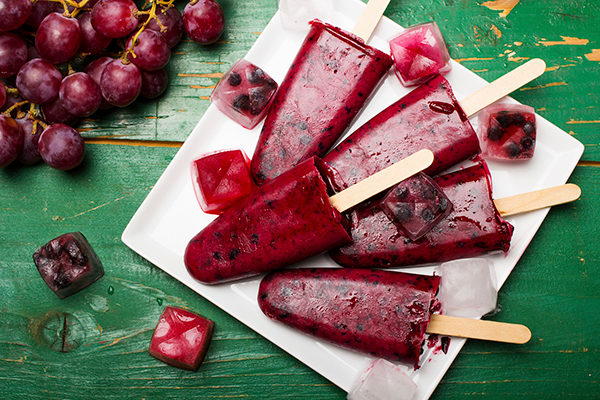
Rosé Isn’t Just for Drinking Anymore
Though drinking rosé is certainly the most common way to enjoy the wine, there are many other ways to enjoy it. Two of the hottest rosé trends are frozen rosé (also called frosé) and rosé-infused gummy bears.
James Beard nominee Chef Sam Mason, the owner/chef of OddFellows Ice Cream Co. in New York, agrees. He loves to cook with rosé, but by “cooking” he means “with a glass of rosé in hand, rather than [in] the sauce pan.”
Mason does, however, blend up the most scrumptious rosé popsicles you’ll ever taste. The pops are easy to make: dry, non-sparkling rosé, a little water and some sugar, and locust bean gum (a natural thickener). Mason serves them upside down in a cup filled with sparkling rosé to further expand the flavor and texture.
How to Shop for Rosé Wine
Some of the most delicious rosé wines are at the wallet-friendly $10–15 price point. “Rosé is a wine of pleasure, meant to be enjoyed on a hot summer day, not a grand emotional experience,” says award-winning sommelier Michael Madrigale, formerly of Chef Daniel Boulud’s Bar Boulud. When choosing a bottle, Madrigale suggests going by the color: “Rosé bottles are usually clear, so you can see the color, which is usually a pretty good indicator of the style.”
Do you like a super crisp, dry, and bright wine? Then look for one that’s pale pink, preferably from Provence, the birthplace of rosé. In fact, the village of Tavel in Provence makes only rosé wine, and is known worldwide for making some of the best.
Do you prefer fruitier wines with a rounder mouth feel? Try a rosé from California, where grapes bask in the sun, and grow bigger and juicier than their European cousins. These wines range in color because there are so many varieties of grapes used in California winemaking, but these rosés tend to be a medium pink color.
If you like your wine spicy and fruity, go for an Italian rosato or a Spanish rosado. These tend to be a darker pink.
Want to try your hand at a few rose recipes? Here are four that feature the drink as a primary ingredient.
Rosé Slushie (Frosé)
Ingredients
- 1 (750-ml.) bottle rosé wine (full-bodied)
- ½ cup water
- 8 to 10 large strawberries, cut into quarters
- ⅔ cup fresh raspberries (about 3 oz.)
- 3 large thyme sprigs
- 5 Tbsp. fresh lemon juice
- ¼ tsp. liquid stevia (optional)
- 1 to 2 cups crushed ice (optional)
Instructions
-
Pour rosé into a shallow pan. Freeze for up to 6 hours. Cook's Note: Rosé will not freeze solid because of alcohol content.
-
Bring water to a boil in medium saucepan over medium-high heat.
-
Add strawberries, raspberries, and thyme. Remove from heat. Let mixture steep, covered, stirring occasionally, for 30 to 45 minutes, or until desired flavor is reached. Strain liquid through fine mesh strainer, pressing on berries with a wooden spoon to remove juice. Refrigerate while rosé freezes.
-
Scrape frozen rosé into blender. Add berry liquid, lemon juice, stevia (if desired), and ice (if desired); cover. Blend until smooth. Freeze mixture for 30 minutes before serving. Reblend quickly.
-
Divide evenly between six wine glasses; serve each with a spoon.
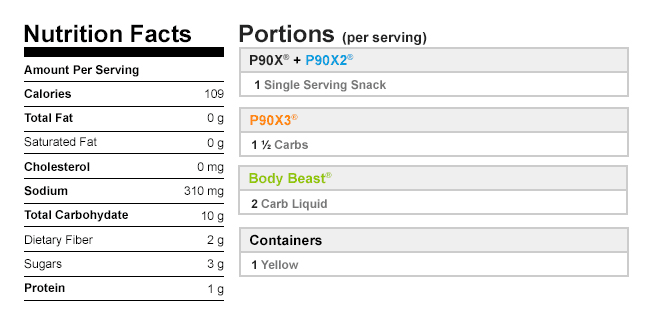
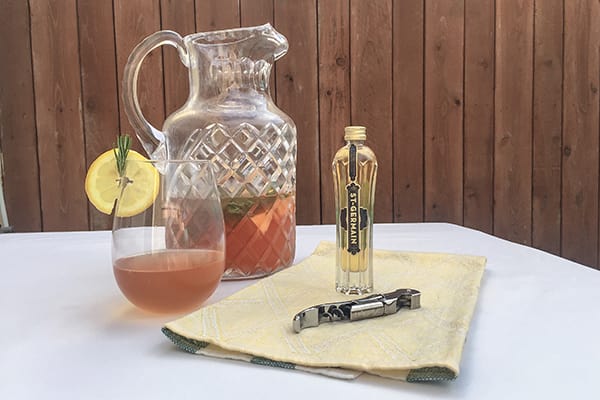
Rosé Sangria
Total Time:
3 hrs. 15 min.
Prep Time: 15 min.
Cooking Time: None
Makes 6 servings, about 6 fl. oz. each
Ingredients
1 (750-ml.) bottle rosé wine
½ cup elderflower liqueur (like St. Germain)
½ cup vodka
1½ medium lemons, sliced, divided use
¾ medium grapefruit, sliced, divided use
1⅓ cups cubed cantaloupe (about ½ small cantaloupe), divided use
3 fresh rosemary sprigs
Preparation
1. Place rosé, elderflower liqueur, vodka, 1 sliced lemon, ½ sliced grapefruit, 1 cup cantaloupe, and rosemary in a large pitcher. Refrigerate for 3 hours. Cook’s Note: Check flavor of sangria every 30 minutes and use rosé from Provence, if possible. Fruit that sits in sangria too long can go sour.
2. When sangria reaches desired flavor remove fruit and rosemary.
3. Evenly garnish six glasses with remaining ½ lemon, remaining ¼ grapefruit, and remaining ⅓ cup cantaloupe. Evenly add sangria; serve immediately.
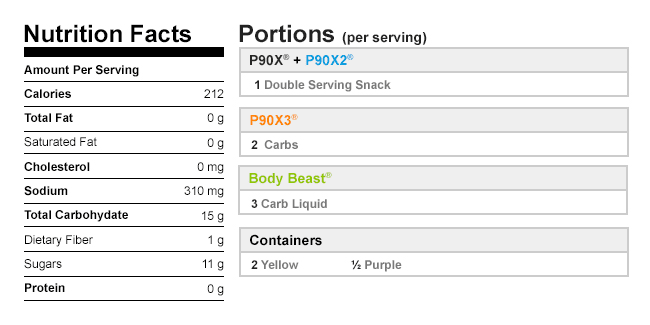
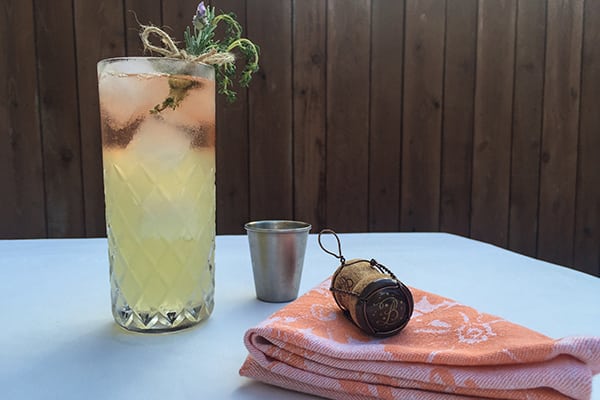
Herbs de Provence Boozy Lemonade
Total Time:
2 hrs.
Prep Time: 10 min.
Cooking Time: 5 min.
Makes 6 servings, about 6 fl. oz. each
Ingredients
1 cup water
1 tsp. Herbs de Provence
Ice
¼ cup vodka
¼ cup fresh lemon juice
4 drops liquid stevia (optional)
1 (750-ml.) bottle sparkling rosé, chilled
Preparation
1. Bring water to a boil in medium saucepan over medium-high heat.
2. Add Herbs de Provence. Remove from heat. Let mixture steep, covered, stirring occasionally, for 30 to 45 minutes, or until desired flavor is reached. Strain through fine mesh strainer. Refrigerate for 1 hour, or until cool.
3. Fill a cocktail shaker ¾ full of ice.
4. Add vodka, lemon juice, ⅓ cup Herbs de Provence liquid, and stevia (if desired). Shake vigorously for 30 seconds, or until drink is chilled. Taste for flavor; add additional lemon juice or stevia if needed.
5. Pour evenly over fresh ice in six collins glasses. Top evenly with rosé; mix well. Voila! A little taste of Provence in a glass!
Tip: Store leftover Herbs de Provence mixture in an air-tight container in the refrigerator for up to two weeks.
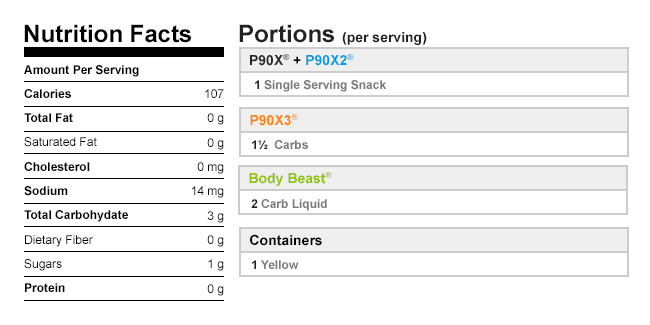
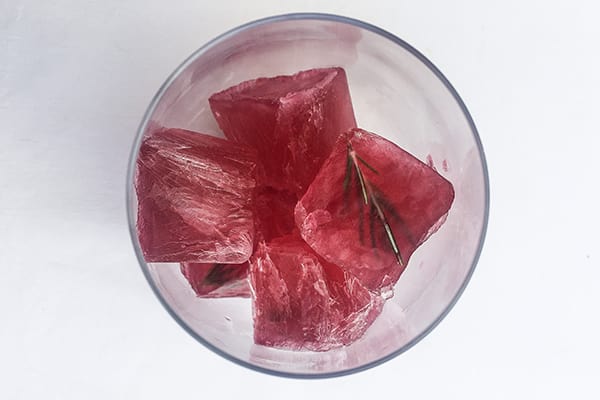
Rosé Ice Cubes
Total Time:
6 hrs. 10 min.
Prep Time: 10 min.
Cooking Time: None
Makes 16 servings, about 4 ice cubes each
Ingredients
1 cup fresh raspberries (optional)
4 large rosemary sprigs, broken into ½-inch pieces (optional)
1 (750-ml.) bottle rosé wine (full-bodied)
Preparation
1. Place a raspberry and sprig of rosemary into each ice cube section of an ice cube tray (if desired).
2. Add rosé to fill. Freeze for up to 6 hours.
Tips:
- Due to the alcohol content of rosé, it doesn’t freeze completely solid. For firmer ice cubes, add a little water to the ice tray before adding rosé.
- Add ice cubes to a glass of rosé to keep it extra cold, or to your favorite cocktail for a flavor boost.
